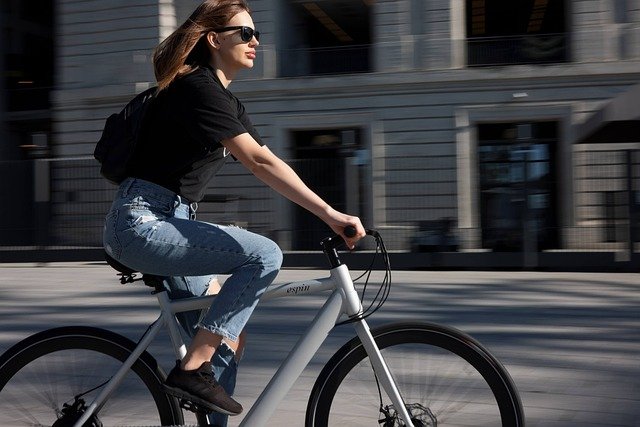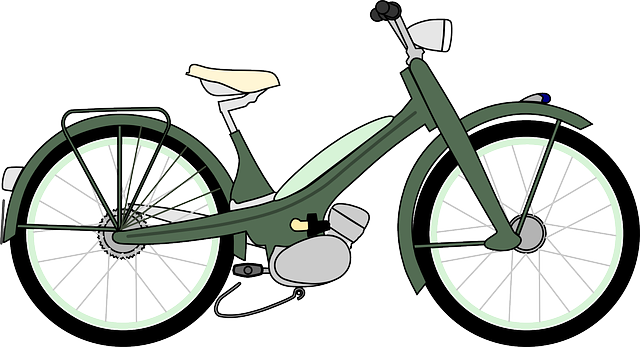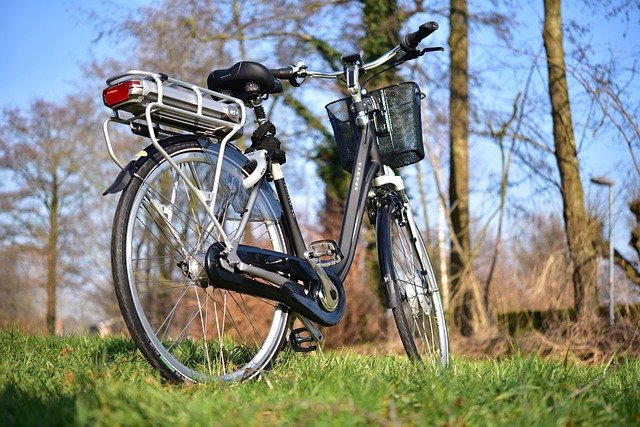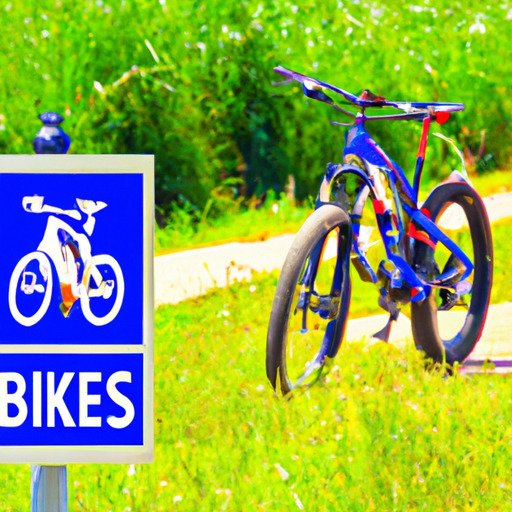
Are you curious about whether or not e-bikes are allowed on bike paths and trails? Well, you’re not alone! With the rise in popularity of electric bikes, many people are wondering if they can cruise along their favorite paths and trails with the help of some battery power.
If you’re eager to find out the answer, you’re in luck! In this article, we’ll dive into the topic of whether or not e-bikes are permitted on bike paths and trails. We’ll discuss the different regulations and laws that govern the use of e-bikes in various regions. So, if you want to know if you can hit the trails on your e-bike or if you’ll have to find a different route, keep reading to get all the information you need!

What are e-bikes?
Definition of e-bikes
E-bikes, short for electric bikes, are bicycles equipped with an electric motor that assists with propulsion. These motors are typically powered by rechargeable batteries, providing an extra boost to the rider’s pedaling power. E-bikes come in various styles and designs, including city bikes, mountain bikes, and folding bikes.
Types of e-bikes
There are several types of e-bikes available in the market, each designed to suit different riding preferences and terrains. Some common types include:
- Pedal-assist e-bikes: These bikes provide electric assistance only when the rider is pedaling. The motor’s power level adjusts according to the rider’s effort, enhancing their pedaling efficiency.
- Throttle-controlled e-bikes: These bikes allow riders to control the electric assistance through a throttle, similar to how a motorbike operates. The rider can engage the motor without the need for pedaling.
- Fat tire e-bikes: These bikes feature wider tires, providing increased stability and traction on challenging terrains such as snow, sand, or gravel.
- Cargo e-bikes: Designed for carrying heavy loads, cargo e-bikes have a sturdy frame and additional storage space, making them ideal for grocery shopping or commuting with luggage.
The classification of bike paths and trails
Different types of bike paths
Bike paths are designated routes for bicycles, offering a safer and more convenient alternative to riding on busy roads. They are typically separated from motorized traffic and can be found in urban, suburban, and rural areas. Bike paths can vary in terms of their infrastructure and location, including:
- Shared-use paths: These paths are designed for both pedestrians and cyclists, allowing them to coexist harmoniously. They often have clear markings and signage to ensure everyone’s safety.
- Off-road trails or greenways: These paths are located away from public roads, offering a more scenic experience for cyclists. They can often be found in parks, nature reserves, or alongside bodies of water.
- Protected bike lanes: These lanes are separated from motor traffic by physical barriers such as curbs or bollards, providing an extra layer of safety for cyclists.
- On-road bike lanes: These lanes are marked on the road surface, indicating a dedicated space for cyclists. They are usually separated from motor vehicles by painted lines.
Regulations for bike paths
The regulations for using bike paths can vary depending on the local jurisdiction. Common regulations include:
- Speed limits: Some bike paths may have specific speed limits to ensure the safety of all users. These limits are typically lower than the speed limits for motor vehicles.
- Yielding to pedestrians: In shared-use paths, cyclists are often required to yield to pedestrians and provide them with a safe space to walk.
- Passing guidelines: Cyclists are usually encouraged to pass other users on the bike path with caution, ensuring a safe distance and clear communication.
- Leash laws: In areas where bike paths intersect with pet-friendly areas, cyclists may be required to keep their pets on a leash to prevent accidents or conflicts.
Types of bike trails
While bike paths are typically paved and designed for recreational or commuting purposes, bike trails are more often associated with off-road experiences in natural settings. Here are some common types of bike trails:
- Mountain biking trails: These trails are specifically designed for off-road mountain biking, featuring challenging terrains, jumps, and obstacles.
- Rail trails: Rail trails are former railroad tracks that have been converted into multi-use paths for cyclists, hikers, and runners. They often offer a smooth and scenic riding experience.
- Singletrack trails: Singletrack trails are narrower, natural-surface trails that wind through forests, meadows, or mountains. They require technical skill and are popular among mountain bikers.
- Gravel trails: Gravel trails consist of unpaved surfaces made up of crushed stones or gravel. They provide a unique riding experience and are suitable for various types of bikes.
Restrictions on bike trails
Similar to bike paths, bike trails may have specific regulations in place to ensure user safety and protect the surrounding environment. Some common restrictions include:
- Trail-specific designations: Certain bike trails may be designated for specific types of bikes, such as mountain bikes or e-bikes. These designations ensure compatibility and safety for all riders.
- Trail fees or permits: In some areas, bike trails may require a fee or permit to access and maintain the trail network. These fees help fund trail maintenance and improvements.
- Seasonal closures: Some bike trails may be closed during certain seasons or weather conditions to protect the trails and surrounding ecosystems. This is often done to prevent erosion or protect wildlife habitats.
- Capacity limits: To prevent overcrowding and ensure a quality experience for all users, bike trails may have capacity limits in place during peak times or for specific events.
Are e-bikes allowed on bike paths?
General guidelines
The allowance of e-bikes on bike paths largely depends on local regulations and jurisdiction. While some areas embrace e-bikes as a viable mode of transportation, others have specific restrictions in place. Here are some general guidelines to consider:
- Local laws and regulations: It is important to familiarize yourself with the specific laws and regulations governing e-bike usage in your area. These regulations may dictate where e-bikes are allowed, what types are permitted, and any additional restrictions or requirements.
- Respect other path users: Regardless of whether e-bikes are permitted or not, it is crucial to respect other path users. This includes maintaining safe speeds, yielding to pedestrians, and communicating your presence when passing.
Speed limits
In areas where e-bikes are allowed on bike paths, there may be specific speed limits in place. These limits are typically designed to ensure the safety of all path users, including pedestrians and cyclists. It is important to adhere to these speed limits and adjust your riding accordingly.
Motor assistance restrictions
Depending on regulations and path guidelines, there may be restrictions on the level of motor assistance provided by e-bikes on bike paths. Some areas may require e-bike motors to cut out at a certain speed or impose limitations on the power output of the motor. These restrictions aim to maintain a level playing field and prevent excessive speeds on shared paths.
Compliance with local regulations
To ensure a positive e-bike experience on bike paths, it is essential to comply with local regulations. This includes registering your e-bike if required, adhering to any specific path designations, and following all applicable traffic laws. By being a responsible e-bike rider, you help cultivate a positive reputation for e-bikes on paths and trails.
Are e-bikes allowed on bike trails?
Trails designated for e-bikes
Some bike trails have been specifically designated for e-bike use, recognizing the growing popularity and demand for this form of transportation. These trails often accommodate a wide range of e-bike styles and offer a unique riding experience. E-bike designated trails are typically designed to handle the increased speed and power of e-bikes.
Restrictions on e-bikes
Despite the presence of e-bike designated trails, there may still be restrictions in place to protect the natural environment and prioritize user safety. These restrictions can include:
- Trail-specific designations: Just like bike paths, bike trails may have designations based on the type of bike allowed. Some trails may be limited to pedal-assist e-bikes only, while others may permit throttle-controlled e-bikes as well.
- Power restrictions: Certain trails may enforce power restrictions on e-bikes, limiting the wattage or speed capabilities of the motors. These restrictions are in place to maintain trail integrity and prevent excessive wear and tear.
- Size and weight limits: Some trails may have restrictions on the size and weight of e-bikes allowed. This is to protect trail infrastructure, as heavier e-bikes can cause more damage to the trail surface.
Environmental considerations
When allowing e-bikes on bike trails, it is crucial to consider the potential impact on the surrounding environment. Increased usage and higher speeds can lead to greater erosion and disturbance of wildlife habitats. Trail managers and environmental organizations must strike a balance between providing access to e-bike riders and protecting the ecological integrity of the trails.
Safety concerns
Introducing e-bikes onto bike trails also raises safety concerns. The higher speeds and increased momentum of e-bikes can pose a risk to other trail users, especially if trails are narrow or have blind spots. Proper signage, education programs, and trail design considerations can help mitigate these safety concerns and promote responsible trail use.

Benefits of allowing e-bikes on paths and trails
Promoting active transportation
Allowing e-bikes on paths and trails encourages active transportation by providing a convenient, sustainable, and enjoyable option for commuting or recreation. E-bikes make cycling accessible to a wider range of individuals, including those who may have physical limitations or longer commuting distances.
Reduced traffic congestion
By promoting the use of e-bikes on paths and trails, there is a potential to decrease traffic congestion on roads. E-bikes offer an alternative mode of transportation, particularly for short to medium distance trips or local errands. As more people choose e-bikes over cars for their daily commute or recreational activities, there is a corresponding reduction in the number of vehicles on the road.
Increased accessibility
E-bikes can bridge the gap between traditional bicycles and motor vehicles by providing an option that is easier on the rider. The electric motor assistance helps individuals overcome physical limitations, such as age or physical fitness, making cycling a more inclusive activity. E-bikes also enable riders to tackle longer distances or hilly terrains with less effort, making them an attractive choice for those who may otherwise be deterred from cycling.
Encouraging outdoor recreation
Allowing e-bikes on paths and trails promotes and encourages outdoor recreation opportunities. With the extra assistance provided by e-bikes, riders can explore natural landscapes, tackle challenging terrains, and enjoy longer rides with minimal strain. This not only boosts physical health and wellbeing but also supports local economies through increased tourism and recreational spending.
Concerns and opposition to e-bikes on paths and trails
Conflicts with traditional cyclists
One concern raised by traditional cyclists is that the presence of e-bikes on paths and trails may disrupt the cycling experience they are accustomed to. The increased speed and power of e-bikes can create conflicts, especially in areas with limited space or heavy trail usage. Effective signage, designated areas for different types of bikes, and education campaigns can help ease these conflicts and promote harmonious coexistence.
Potential for accidents
A valid concern when introducing e-bikes on paths and trails is the potential for accidents. The higher speeds and increased momentum of e-bikes can make it challenging for riders to react quickly to avoid collisions. It is essential for e-bike riders to prioritize safety, follow path regulations, and be mindful of other users to mitigate the risk of accidents.
Damage to paths and trails
The weight and increased speeds of e-bikes have the potential to cause greater wear and tear on bike paths and trails compared to traditional bicycles. This can lead to increased maintenance costs and the need for more frequent repairs. Collaboration between trail managers, e-bike manufacturers, and riders is crucial to ensure the sustainability and longevity of paths and trails.
Noise and disturbance
Opponents of e-bikes on paths and trails often highlight concerns about noise pollution and disturbance to wildlife. The electric motors of e-bikes can generate noise that disrupts the tranquility of natural environments. However, advancements in e-bike technology continue to address these concerns by producing quieter motors and encouraging responsible riding practices.

Case studies and experiences
Cities or regions allowing e-bikes
Several cities and regions around the world have embraced e-bikes by allowing their use on bike paths and trails. For example, in the Netherlands, a country famous for its cycling culture, e-bikes are widely accepted on existing cycling infrastructure. The Netherlands has recognized the role e-bikes play in promoting sustainable transportation and encouraging active lifestyles.
Effects on usage and ridership
Cities and regions that have allowed e-bikes on paths and trails have reported positive effects on usage and ridership. With the increased accessibility and convenience of e-bikes, more people are opting for cycling as a viable mode of transportation. These cities and regions have seen an uptick in the number of cyclists, especially among individuals who may have previously been deterred by the physical demands of traditional cycling.
Public feedback and opinions
Public feedback regarding the allowance of e-bikes on paths and trails has been mixed. While some individuals appreciate the inclusion of e-bikes as a way to promote active transportation and improve accessibility, others express concern about the potential conflicts and safety hazards. Public awareness campaigns, community engagement, and ongoing dialogue are essential in addressing these concerns and gathering input from all stakeholders.
Current trends and future implications
Changing regulations
As the popularity of e-bikes continues to rise, regulations regarding their usage on paths and trails are evolving. Many jurisdictions are reevaluating their existing policies to accommodate e-bikes and provide clarity for riders. This includes determining acceptable motor power limits, designating specific trails or paths for e-bike use, and implementing education programs for all path users.
Advancements in e-bike technology
Advancements in e-bike technology are driving the development of lighter, more efficient, and eco-friendly models. Manufacturers are continuously improving battery life, motor performance, and overall ride quality. These technological advancements contribute to increased acceptance and integration of e-bikes into existing cycling infrastructure.
Integration with urban planning
The inclusion of e-bikes in urban planning and transportation strategies is becoming more prevalent. Cities are recognizing the potential benefits of e-bike usage, such as reduced traffic congestion and improved air quality. Urban planners are incorporating e-bike infrastructure into their designs by creating bike-friendly cities with dedicated paths, charging stations, and secure parking facilities.

Conclusion
Understanding the complexities surrounding the allowance of e-bikes on bike paths and trails is crucial for promoting responsible usage and harmonious coexistence among all path users. While regulations and restrictions vary across jurisdictions, the overall trend is towards accommodating e-bikes as a legitimate mode of transportation and recreation. By striking a balance between the needs and concerns of different user groups and implementing thoughtful regulations, e-bikes can contribute to a more sustainable and accessible future for cycling.




















